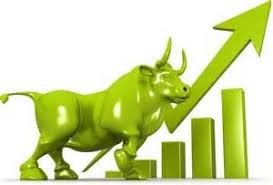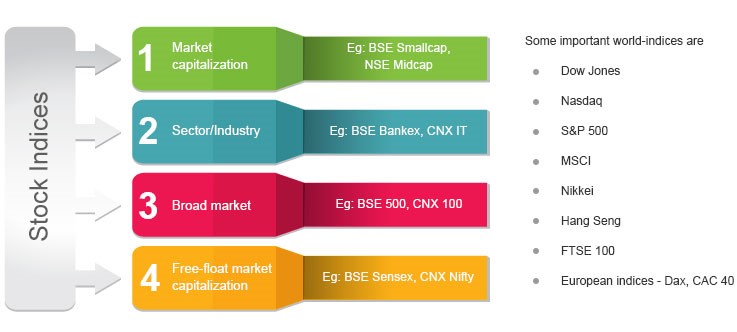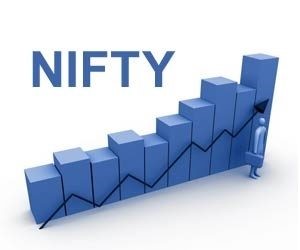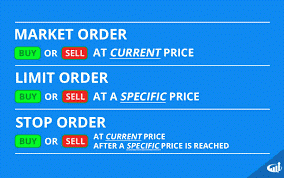
Share means you become the company owner partly. In share market, shares are bought & sold. The stock market is a place, however besides share of companies, other instruments like bonds, mutual funds & derivative contracts too are traded in the stock market.
Always remember one thing when working in share market, that it has to be considered as your secondary income source.
Look at share market as part time income.
While working in share market does not use your entire amounts for intraday trading. Make good allocation of your amounts, use 80:20 formula. Means if I have Rs.1 lakh so 80,000 (i.e 80%) I will use for delivery-based investment & remaining 20,000/-(i. e. 20%) I will use for trading. Always control your losses, always trade with strict stop losses or else please do not trade, even while doing investment we can earn good returns.
So, we can do 80% investments & 20% trading.
There are 2 types of people working in share market.
- First is investor who does Investments.
- Second is trader who does Trading.
The most important thing in share market is that it runs on emotions, so here we have to control our emotions. If you have earned profit do not be happy & in emotions you do not have to trade more or if you have incurred losses do not be sad.
Stock market are some of the most important parts of today’s global economy. Countries around the world depend on stock market for economic growth. However, stock markets are relatively new phenomenon. They haven’t always played an important role in global economics.
The top 10 stock market in the world today ranked by market capitalization.
- NEW YORK STOCK EXCHANGE
- NASDAQ
- TOKYO STOCK EXCHANGE
- LONDON STOCK MARKET EXCHANGE
- EURONEXT
- HONG KONG STOCK EXCHANGE
- SHANGHAI STOCK EXCHANGE
- TORONTO STOCK EXCHANGE
- FRANK FURT STOCK EXCHANGE
- AUSTRALIAN SECURITIES EXCHANGE
Other rising stock market outside of the top 10 include the BOMBAY STOCK EXCHANGE based in Mumbai, INDIA as well as the BM & FBOVESP stock exchange based in SAO PAULO, BRAZIL.
*TIPS FOR BEGINNERS IN STOCK MARKET
- UNDERSTANDING HOW MARKET BEHAVE.
- STOCK MARKET VALUATION MATTERS.
- THINK LONG – TERM & BE PATIENT.
- LOOK FOR TOP BRAND COMPANIES THAT CONTROL PRICES.
- MINIMIZE YOUR MISTAKS & LEARN FROM THOSE YOU MAKE.
- NEVER OVERPAY.
- NEVER INVEST IN A BUSINESS YOU CANNOT UNDARSTAND.
- DON’T COMPROMISE ON THE QUALITY OF BUSINESS.
- JUST DON’T LISTEN TO THOSE WHOM YOU TRUST, START TAKING ADVICE FROM THOSE WHO ALREADY INTO IT & ARE EXPERTS.
- EVERYDAY WATCH CNBC AWAZ, ZEE BUSINESS, NDTV PROFIT, ET NOW etc LIKE BUSINESS CHANNELS TO GET LATEST MARKET UPDATES.
- READ NEWSPAPERS LIKE ECONOMIC TIMES, FINANCIAL EXPRESS, BUSINESS STANDARD.
- TO DO INVESTMENTS IN MARKET THAT IS DELIVERY BUY SUGGESTED MONTHS ARE JUNE, JULY& AUGUST.
- BEST MONTH FOR SELLING IS JANUARY OR FEBRUARY (before budget).
- DO MOCK TRADING OR PAPER TRADING FOR 1 WEEK WHILE LEARNING.
BULLISH MARKET:

A trend in financial markets can be defined as direction in which the market moves. ‘bullish trend’ is an upward trend in the price of an industry stocks or the overall rise in broad market indices, characterized by high investor confidence.
BEARISH MARKET:

A ‘BEAR MARKET’ is a condition in which securities prices fall & widespread pessimism causes the stock markets downward spiral to be self-sustaining. Investors anticipate losses as pessimism & selling increases.
STOCK EXCHANGE
- Stock exchange is a place where buying & selling of shares happens.
- BSE – BOMBAY STOCK EXCHANGE
- NSE – NATIONAL STOCK EXCHANGE
THESE TWO ARE NATIONAL LEVEL EXCHANGE IN INDIA.

To know any countries economic condition & stock markets rate fluctuation a parameter known as INDEX is used. A stock index or stock market index is a measurement of a section of the stock market. It is computed from the prices of selected stocks. It is tool used by investors & financial managers to describe the market, & to compare the return on specific investments.
SENSEX: (or sensitive index)

- BOMBAY STOCK EXCHANGE (BSE) index is known as SENSEX.
- Sensex started on 01/01/1986 & its base rate was Rs.100/-
- Sensex is calculated by average price of TOP 30 company by market capitalization.
- Website: bseindia.comtj
- The sensex is the oldest stock index in India.
- On 25 july 2001 BSE launched dollar – 30, a dollar- limited version of S&P BSE SENSEX.
- The base year of SENSEX is 1978-1979 & the base value is 100
- More than 5500 companies are publicly listed on the BSE.
- As of 25th September 2017, the full market capitalization of S&P BSE Sensex was about Rs.54,637.0878 billion (US $837 billion) (37% of GDP) while its free float market capitalization was Rs.30,094.2286billon (US $4616). During 2008-12, Sensex 30 Index share of BSE market capitalization full from 49% to 25% due to the rise of sectoral indices like BSE PSU, BANKEX, BSE- TECK etc.
- Analysts & investors use the sensex to observe the growth, development of particular industries & booms & base of the Indian economy.
- If sensex goes up, it means that most of the stocks in India went up during the given period. If the sensex goes down, this tells you that the stock price of most of the major stocks on the BSE has gone down
- METHOD ADOPTED FOR SENSEX CALCULATION:
The method adopted for calculating sensex is the market capitalization weighted method in which weights are assigned according to the size of the company larger the size, higher the weightage.
NIFTY:

- NATIONAL STOCK EXCHANGE (NSE) index is known as NIFTY.
- Nifty started on 03/11/1995.
- Nifty is calculated by 23 various sectors & top 51 companies.
- Nifty base value was kept 1000
- Website: nseindia.com
- The S&P nifty (also known as NSE nifty-50 or Nifty) is a stock Index in India.
- The constituents of the Index change periodically, depending on liquidity, availability of floating stock, turnover & volume of transactions.
- S&P (NX Nifty, which is owned & managed by India Index sevices & products ltd. (IISL), is India’s first company to focus upon a stock Index as a core product. IISL has a marketing & licensing agreement with standard & poor’s (S&P) Index sevices.
- Maximum volumes take place on NSE & hence enjoy leadership position in the country today.
- The National Stock Exchange (NSE) in India’s leading stock exchange covering 364 cities & towns across the country.
- NSE has played a catalytic role in reforming the Indian securities market in terms of microstructure, market practices & trading volumes.
- NSE’s mission is setting the agenda for change in the securities markets in India. The NSE was set up with following objectives:
- Establishing a nation-wide trading facility for equities, debt instruments & hybrids.
- Ensuring equal access to investors all over the country through an appropriate communication network.
- Providing a fair, efficient & transparent securities market to investors using electronic trading system.
- Enabling shorter settlement cycles & book entry settlements systems.
- Meeting the current international standards of securities markets.
DIFFERENCE BETWEEN BSE and NSE
| BASIS FOR COMPARISON | BSE | NSE |
| Introduction | Bombay Stock Exchange is the oldest financial market in the country, which offers high speed trading to its customers. | National Stock Exchange is the biggest capital market of the country. The exchange is a front runner in the introduction of the fully automated, electronic trading system across the nation. |
| Founded in | 1875 | 1992 |
| Benchmark index | Sensex | Nifty |
| Total listed companies (April 2015) | 5650 | 1740 |
| Market Capitalization | Around 1.68 trillion | Around 1.5 trillion |
| Global Rank | 10th | 11th |
| Network | Over 400 cities | Over 2000 cities |
TYPES OF ORDERS

MARKET ORDER
Market order means while doing trading whatever rate is there in front of you, you buy or sell at that prevailing rate is known as MARKET ORDER.
Eg. SBIN @250
And immediately you buy or sell at the same price means MARKET ORDER.
BUY SBIN @250
LIMIT ORDER
Limit order means while trading I will not place buy/sell order at the current going rate but at rate which I wish to put. This is known as LIMIT ORDER.
When we place a STOP LOSS or TARGET ORDER these are all limit order because we place stop loss & target order at rate which we wish to place.
Eg. SBIN CMP @250
BUY SBIN @249.50 ( pending limit order)
SELL SBIN @ 250.50 (pending limit order)
STOP ORDER
Stop order, also referred to as stop loss order, is an order to buy or sell a stock once the price of the stock reaches a specified price, known as the stop price. When the stop price is reached, a stop order becomes a market order. A buy stop order is entered at a stop price above the current market price.

